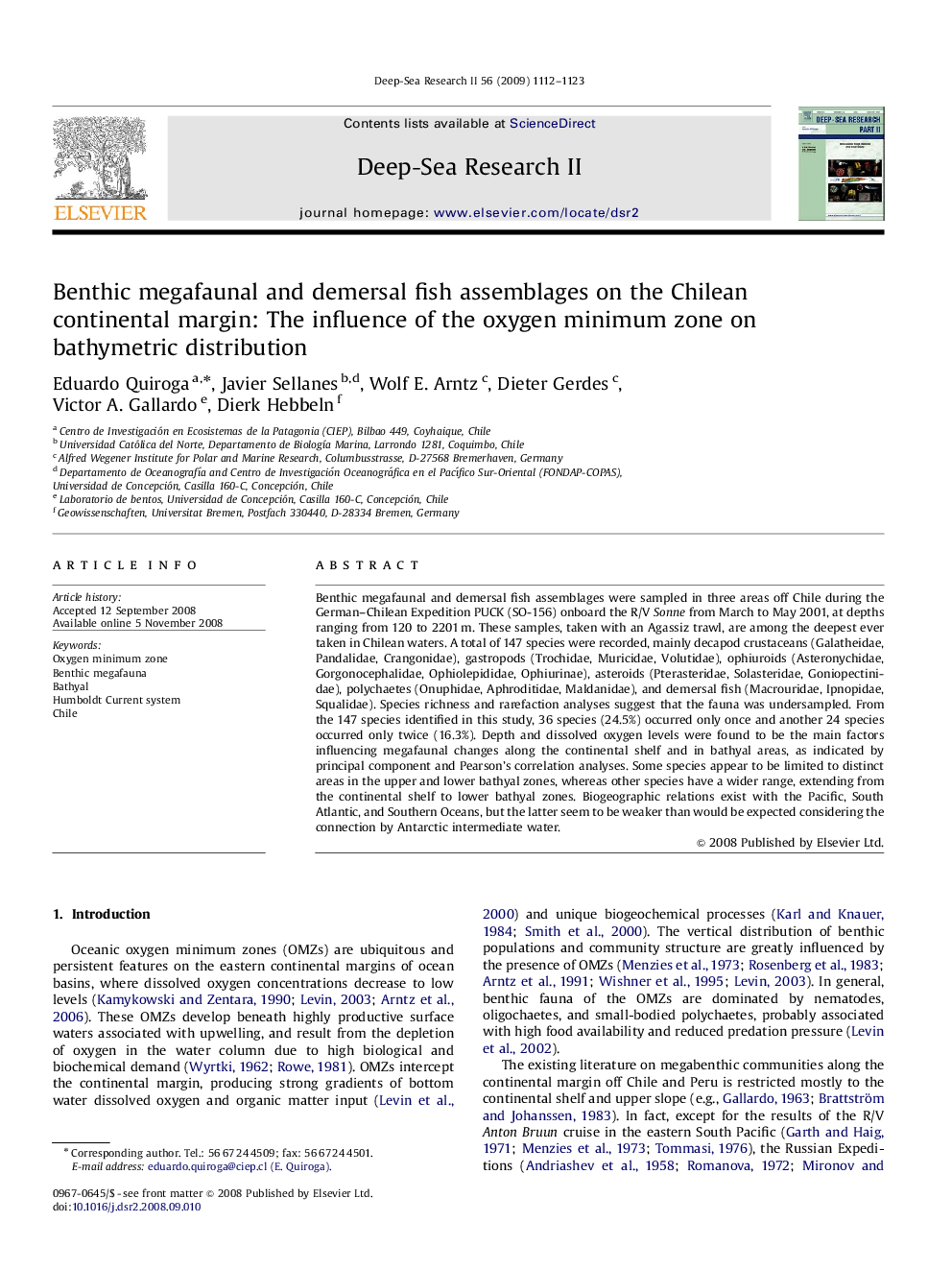| Article ID | Journal | Published Year | Pages | File Type |
|---|---|---|---|---|
| 4537435 | Deep Sea Research Part II: Topical Studies in Oceanography | 2009 | 12 Pages |
Abstract
Benthic megafaunal and demersal fish assemblages were sampled in three areas off Chile during the German-Chilean Expedition PUCK (SO-156) onboard the R/V Sonne from March to May 2001, at depths ranging from 120 to 2201Â m. These samples, taken with an Agassiz trawl, are among the deepest ever taken in Chilean waters. A total of 147 species were recorded, mainly decapod crustaceans (Galatheidae, Pandalidae, Crangonidae), gastropods (Trochidae, Muricidae, Volutidae), ophiuroids (Asteronychidae, Gorgonocephalidae, Ophiolepididae, Ophiurinae), asteroids (Pterasteridae, Solasteridae, Goniopectinidae), polychaetes (Onuphidae, Aphroditidae, Maldanidae), and demersal fish (Macrouridae, Ipnopidae, Squalidae). Species richness and rarefaction analyses suggest that the fauna was undersampled. From the 147 species identified in this study, 36 species (24.5%) occurred only once and another 24 species occurred only twice (16.3%). Depth and dissolved oxygen levels were found to be the main factors influencing megafaunal changes along the continental shelf and in bathyal areas, as indicated by principal component and Pearson's correlation analyses. Some species appear to be limited to distinct areas in the upper and lower bathyal zones, whereas other species have a wider range, extending from the continental shelf to lower bathyal zones. Biogeographic relations exist with the Pacific, South Atlantic, and Southern Oceans, but the latter seem to be weaker than would be expected considering the connection by Antarctic intermediate water.
Related Topics
Physical Sciences and Engineering
Earth and Planetary Sciences
Geology
Authors
Eduardo Quiroga, Javier Sellanes, Wolf E. Arntz, Dieter Gerdes, Victor A. Gallardo, Dierk Hebbeln,
